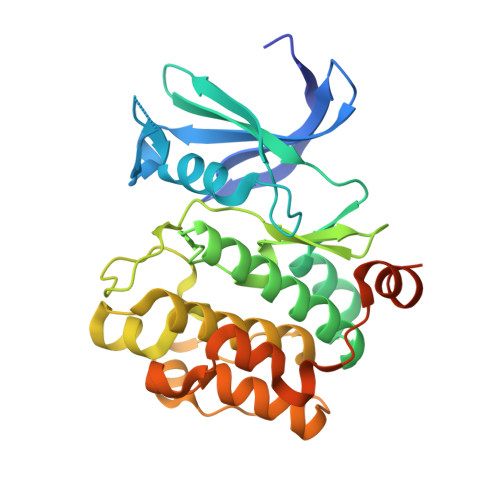Implications of promiscuous Pim-1 kinase fragment inhibitor hydrophobic interactions for fragment-based drug design.
Good, A.C., Liu, J., Hirth, B., Asmussen, G., Xiang, Y., Biemann, H.P., Bishop, K.A., Fremgen, T., Fitzgerald, M., Gladysheva, T., Jain, A., Jancsics, K., Metz, M., Papoulis, A., Skerlj, R., Stepp, J.D., Wei, R.R.(2012) J Med Chem 55: 2641-2648
- PubMed: 22339127
- DOI: https://doi.org/10.1021/jm2014698
- Primary Citation of Related Structures:
3VBQ, 3VBT, 3VBV, 3VBW, 3VBX, 3VBY, 3VC4 - PubMed Abstract:
We have studied the subtleties of fragment docking and binding using data generated in a Pim-1 kinase inhibitor program. Crystallographic and docking data analyses have been undertaken using inhibitor complexes derived from an in-house surface plasmon resonance (SPR) fragment screen, a virtual needle screen, and a de novo designed fragment inhibitor hybrid. These investigations highlight that fragments that do not fill their binding pocket can exhibit promiscuous hydrophobic interactions due to the lack of steric constraints imposed on them by the boundaries of said pocket. As a result, docking modes that disagree with an observed crystal structure but maintain key crystallographically observed hydrogen bonds still have potential value in ligand design and optimization. This observation runs counter to the lore in fragment-based drug design that all fragment elaboration must be based on the parent crystal structure alone.
Organizational Affiliation:
Department of Medicinal Chemistry, Genzyme Corp., 153 Second Avenue, Waltham, Massachusetts 02451, United States. andrew.good@genzyme.com















